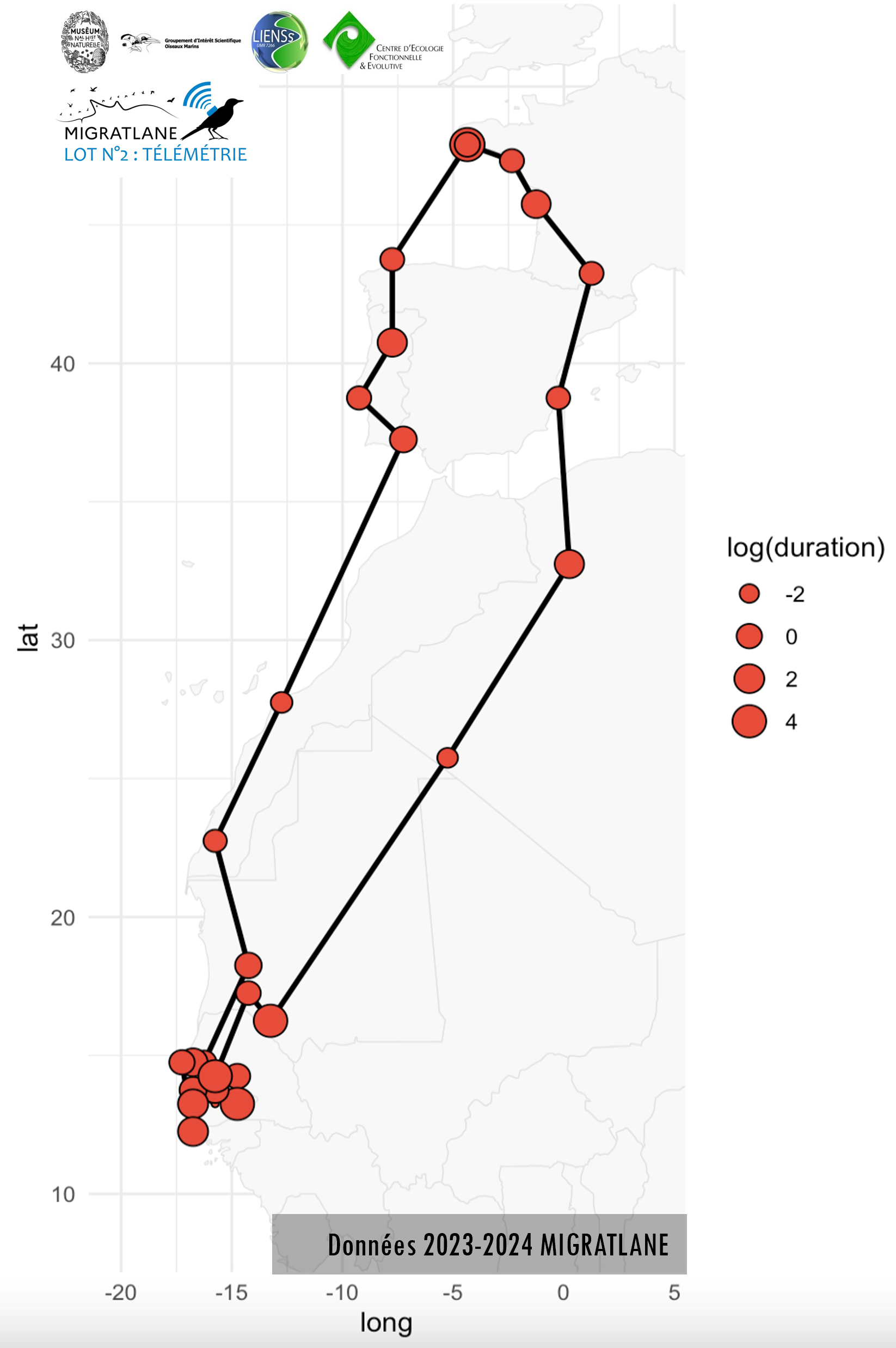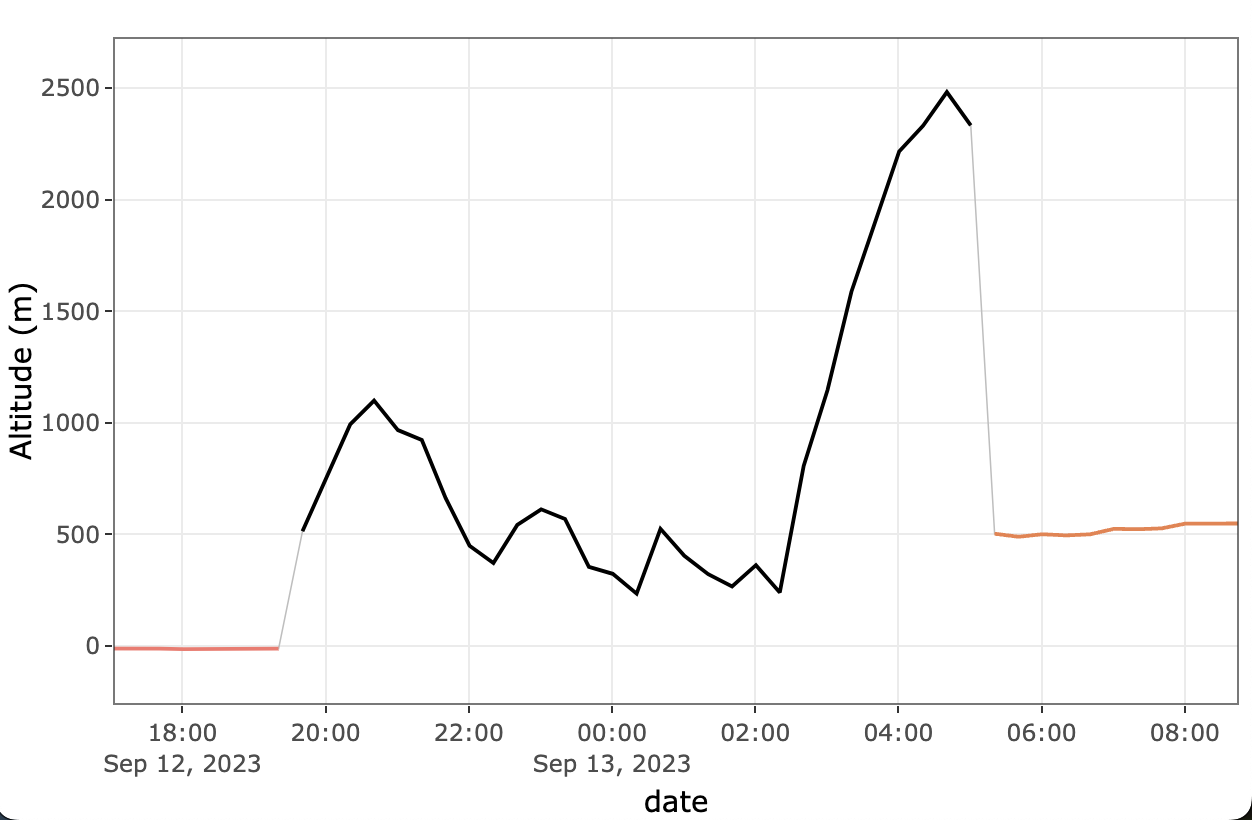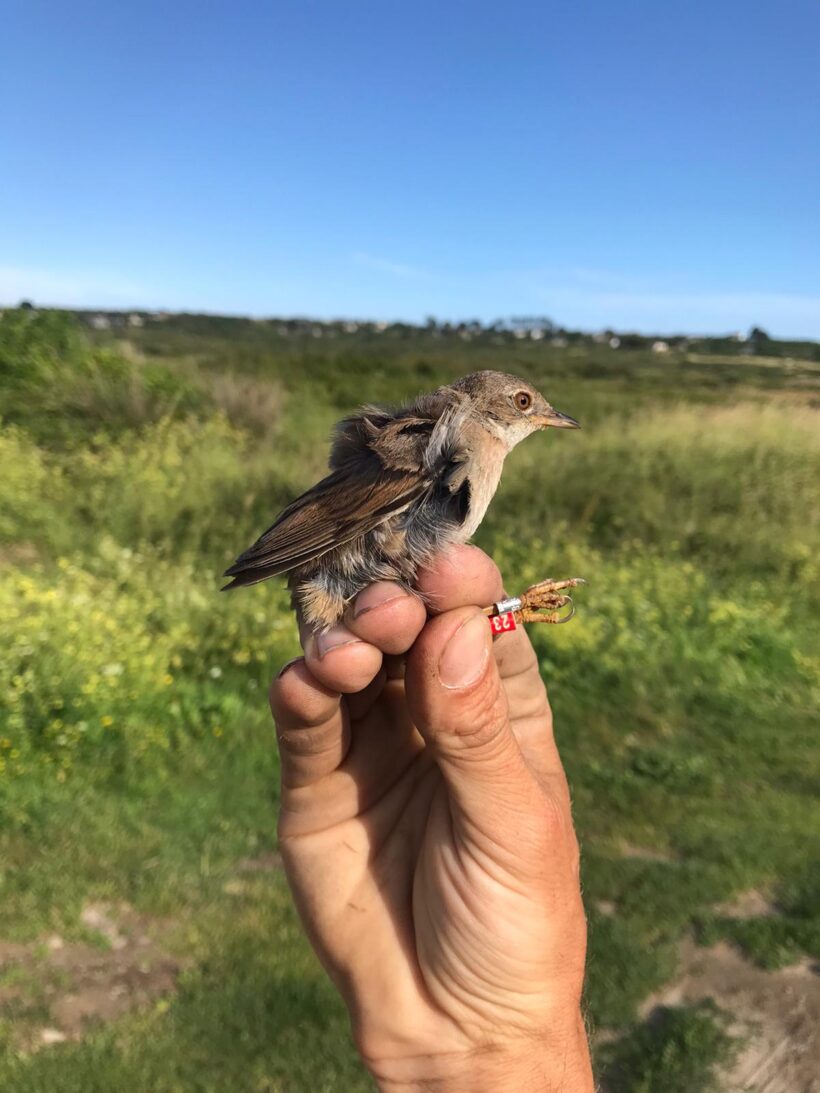I hardly weigh 14g and I’ve already crossed the Sahara at least 3 times, so who am I?
Admire the feat of whitethroat No 03 ! Captured and fitted with a GLS in Audierne Bay, Finistère in May 2023. She was found on the same site in May 2024, still carrying her mini GLS backpack. It was filled with data that enabled us to reconstruct the broad outlines of the migratory journey undertaken by its bearer.
GLSs are tiny 0.5g instruments that capture and record light using a photometer. The light data is used to calculate sunrise/sunset times and the length of days, giving 2 latitude/longitude positions per day with a relatively large average error of 50 to 100km.
In addition to geographical position, the GLS uses a pressure sensor to calculate the bird’s flight altitude after the event, using high-frequency measurements.
In this way, we were able to reconstruct the migration of whitethroat 03, its stopover sites on the outward and return journeys and the altitude at which it crossed the Sahara: up to 2,500 metres. Birds tend to fly very high over the desert, probably to avoid the intense heat. More detailed analysis of the data will enable us to estimate whether the bird crossed maritime areas and at what altitude.


Altitude de vol durant la migration postnuptiale d′une fauvette grisette bretonne équipée d′un GLS et traversant le Sahara
In addition to Whitethroat 03, three sedge warblers from Trunvel (Finistère), one western yellow wagtail from the Marais Breton (Vendée) and four breeding wheathears from Ouessant (Finistère) have already been found and had their GLS removed since the start of the season. The entire MIGRATLANE-telemetry team is deployed in the field from Charente-Maritime to the North of France to find the birds equipped in 2023 and place other tags on new birds!
Many thanks to all the managers of the study sites and to the volunteers who helped us in the field, particularly at Trunvel and Ouessant. And thanks to Paul for the ultra-fast analysis and the map.

